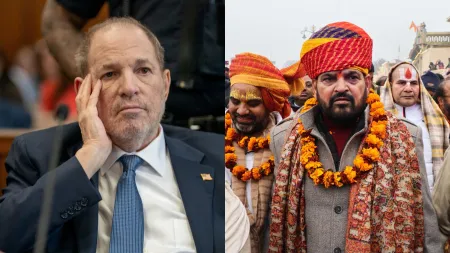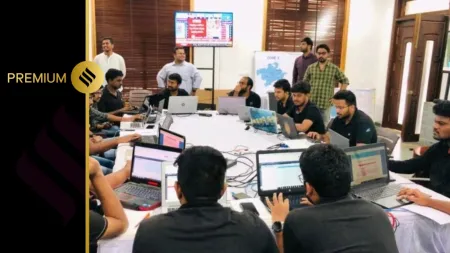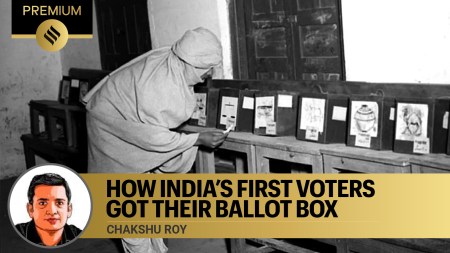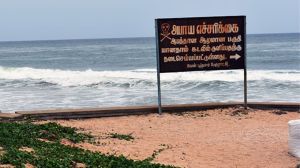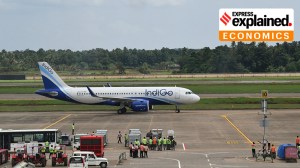- India
- International
Know Your City: From deterring invaders to paving way for the urban landscape, the story of Bangalore Fort
The Oval Fort was built to prevent invaders from attacking Bengaluru from the Mysuru side or the southern part. After the British rule, the fort began losing its landscape to cater to the developmental needs of Bengaluru.
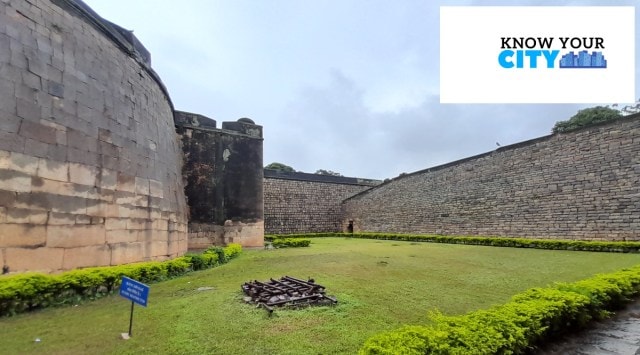 The inner courtyard of the Bangalore Fort or the Oval Fort built by the Wodeyars.
(Photo credit: Sanath Prasad)
The inner courtyard of the Bangalore Fort or the Oval Fort built by the Wodeyars.
(Photo credit: Sanath Prasad)The Bangalore Fort, better known as the Oval Fort and located right in the centre of Bengaluru near the ever-bustling KR Market, has a story that dates back to the 1500s. While the Oval Fort now has hardly any visitors, its rich history tells us how forts added value to the township and deterred enemies from occupying the city.
History has it that the founder of Bengaluru, Kempe Gowda I, believed that building a fort was important from a military and strategic viewpoint despite the place being surrounded by hills that made invaders struggle to conquer the city. The tale of Bangalore Fort dates back to that of the Kempegowda Fort, also known as the Pete (Market) Fort, built in 1537 by Kempe Gowda I. The mud fort was built with immense financial support from the king of Vijayanagara, Achyuta Deva Raya, who had granted land and assisted Kempe Gowda in running the affairs of the fort.
Kempe Gowda built the fort, which stretches across two kilometres, with an aim to develop a township. He invited traders, artisans and weavers to help them settle down in the fort area. Most of the traders were involved in trading rice (akki in Kannada), flowers and bangles among other commodities. Bengaluru-based historian Arun Prasad says, “The names of the Pete (market) areas like Akkipete, Balepete, Thigalarpete, Kumbarpete, Aralepete were identified with the commodities the traders used to sell and the communities they represented.” For example, rice was traded in Akkipete, Kumbarpete was the area of potters and horticulturists resided at Thigalarpete.
According to Prasad, two main roads ran through the fort – Doddapete and Chickpete. The fort had about nine gates of which the prominent ones were the Yelahanka gate, Halasuru gate, Anekal gate, Sondekoppa gate, Kengeri gate, Yeshwantpur gate and Kanakanahalli gate. “The fort covered a massive space, stretching from present-day Halasuru gate police station to Dharmabuddi lake, which is now the Majestic bus stand. Meanwhile, the Yelahanka gate is where the Mysore Bank Circle is now located, and the Halasuru gate is where the Halasuru police station is located at the corporation circle,” Prasad adds.
 The Bangalore Fort was established as part of a defence strategy to prevent invaders from attacking Bengaluru from Mysore region or the southern part.
The Bangalore Fort was established as part of a defence strategy to prevent invaders from attacking Bengaluru from Mysore region or the southern part.
He goes on to explain that in 1638, the Bijapur Sultanate conquered the fort. However, they did not occupy the fort area but instead gifted it, as part of a military exchange (jahagir), to the Maratha Empire which was then ruled by Shahaji Bhonsale, father of Chhatrapati Shivaji. The Marathas occupied the fort for some years until the Mughals, under the command of Kasim Khan captured the fort in 1686.

“Immediately after the Mughals conquered, Chikka Devaraya Wodeyar came to an agreement with the Mughals and bought the entire area, including the fort, on a lease. He had a good vision to redesign and rebuild the Kempegowda Fort. Therefore, on a strategic and military standpoint, he built another new fort in 1689 towards the north of the old Kempegowda Fort, which is now the Bangalore Fort or the Oval fort,” Prasad explains. In fact, the forts were built on plain land in such a way that it helped establish townships that promoted economic and social progress. More so, it was well-guarded because of hills like Ramagiri and Skandagiri.
The Bangalore Fort was established as part of a defence strategy to prevent invaders from attacking Bengaluru from Mysore region or the southern part. It has two gates, the Delhi gate and the Mysore gate. The Wodeyars also built the famous Kote Venkataramana Swamy temple, an armoury and Tipu Sultan’s Summer Palace as part of the Oval Fort. It actually served as a ‘citadel’ to the old fort built by Kempe Gowda. “The new fort and the old fort were later strengthened by Hyder Ali (father of Tipu Sultan) somewhere around the 1760s. Both the forts were strengthened using stones,” Prasad says.
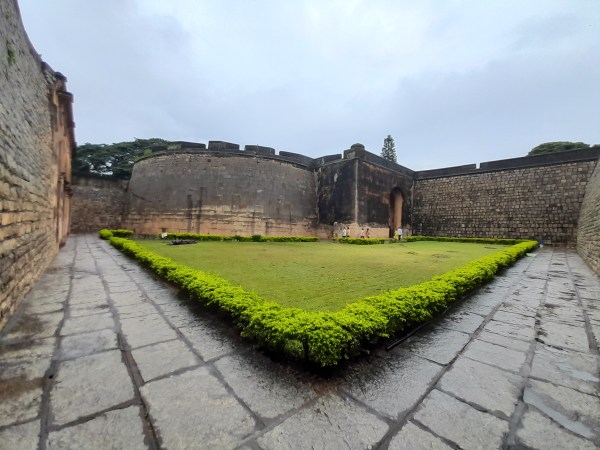 According to Prasad, two main roads ran through the fort – Doddapete and Chickpete. The fort had about nine gates of which the prominent ones were the Yelahanka gate, Halasuru gate, Anekal gate, Sondekoppa gate, Kengeri gate, Yeshwantpur gate and Kanakanahalli gate.
According to Prasad, two main roads ran through the fort – Doddapete and Chickpete. The fort had about nine gates of which the prominent ones were the Yelahanka gate, Halasuru gate, Anekal gate, Sondekoppa gate, Kengeri gate, Yeshwantpur gate and Kanakanahalli gate.
Over the years, the two forts started facing the wrath of the Britishers. The third Anglo-Mysore War began in 1791 after which Lord Cornwallis caused heavy damage to the forts and captured them. “One of the monuments that still remains after capturing the Wodeyar’s fort or the Oval Fort is Tipu’s Summer Palace which was initially started by Hyder Ali after which Tipu expanded and redesigned it. Another that remains is the underground armoury which is still there in Kalasipalya. Even the Taramandalpet area was named after the place from where rockets were experimented and fired by Tipu Sultan,” Prasad shares.
Yashaswini Sharma, architect and author of ‘Bangalore: The Early City’, says, “What we see now in KR Market is just one-third of the original fort. Moreover, this part of the fort is the third inner part of the courtyard located at a certain altitude. The fort had dungeons where Sir David Baird was jailed under the Mughal rule. It also contained barracks for housing soldiers and a Ganesha temple built in the 19th century. The temple has the Gandaberunda or Berunda emblem, which is a two-headed bird believed to possess immense magical strength as per Hindu mythology,” Sharma points out.
However, after the British rule, Oval Fort started losing its landscape to cater to the developmental needs of Bangalore. “With plague causing devastating effects in the city, there were no hospitals to cater to the residents. That was when Victoria Hospital was built. In fact, it was also suggested by M Visvesvaraya to build Victoria Hospital by reusing the stones of the Oval Fort. Major parts of the fort were also lost during the expansion of the roads around the market area,” Sharma says.
May 06: Latest News
- 01
- 02
- 03
- 04
- 05





